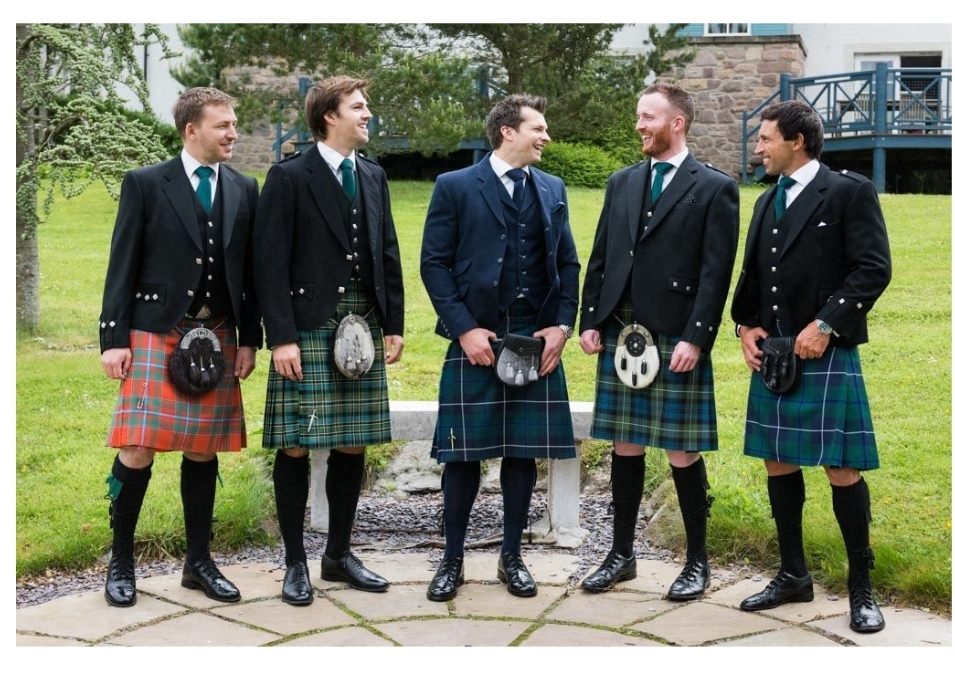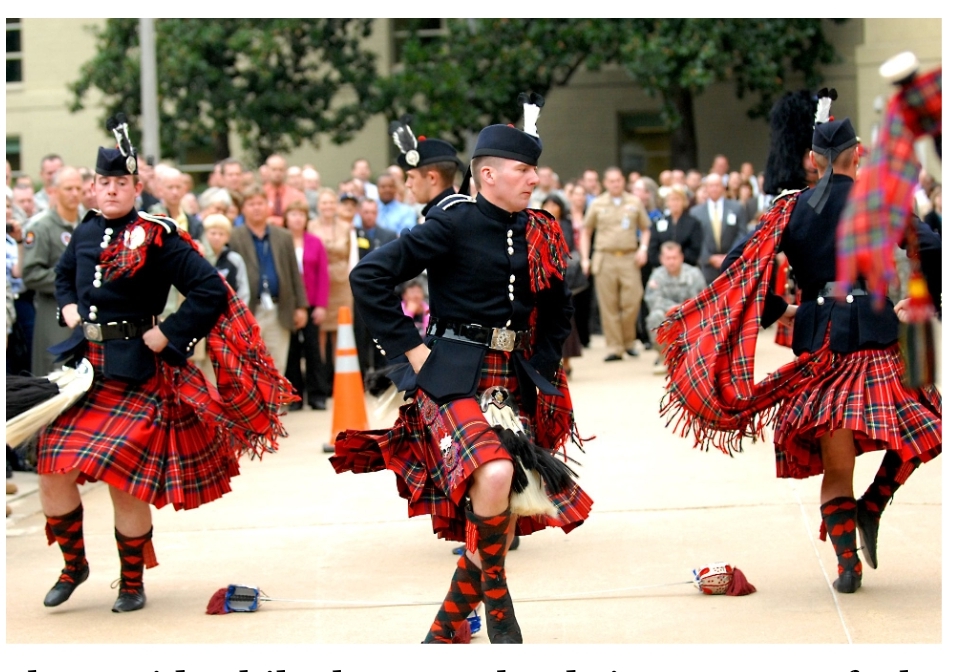A kilt is a type of skirt-like clothing worn by men in Scotland. It’s made from a special kind of cloth called tartan, which has a pattern of crisscrossed stripes. Kilts are important because they represent Scottish culture and history. They are worn during important events like weddings and celebrations to show pride in Scottish heritage.
The Pride kilt is a new version of the traditional Scottish kilt that celebrates LGBTQ+ pride. It uses bright colors like the rainbow to show support for diversity and inclusion. People wear Pride kilts during events like Pride parades and festivals to express their identity and show solidarity with the LGBTQ+ community. The Pride kilt is a modern way to celebrate who you are and promote equality for everyone.
Traditional Elements of the Kilt
The traditional Scottish kilt is a special type of garment worn by men in Scotland. It’s made from a colorful fabric called tartan, which has a pattern of crisscrossed stripes in various colors. The kilt is worn around the waist and reaches down to the knees. It’s usually fastened with a belt and has pleats at the back, which give it a unique look. Kilts are often accompanied by accessories like a sporran (a small pouch worn around the waist), a belt with a decorative buckle, and sometimes a jacket or a vest.
The kilt holds great importance in Scottish culture and history. Each tartan pattern is associated with a specific Scottish clan, representing their identity and heritage. Kilts are worn during significant events such as weddings, Highland games, and ceremonies to honor traditions and show pride in Scottish ancestry. Beyond its practical use, the kilt symbolizes bravery, strength, and unity within Scottish communities. It remains a powerful symbol of Scottish identity and cultural pride, cherished by Scots both at home and abroad.
Emergence of the Pride Kilt
The Pride kilt originated as a creative adaptation of the traditional Scottish kilt to celebrate LGBTQ+ pride. It emerged as a way for individuals within the LGBTQ+ community to express their identity and support for diversity through fashion. Designers began incorporating rainbow colors into the kilt, inspired by the iconic rainbow flag that symbolizes LGBTQ+ pride and equality. This transformation of the traditional garment into a symbol of inclusivity started gaining popularity, especially during Pride events and festivals.
The Pride kilt faced some challenges in gaining acceptance within LGBTQ+ communities. Some people were unsure about mixing a traditional Scottish symbol with modern LGBTQ+ pride symbolism. However, as awareness grew and the visibility of the Pride kilt increased, it began to be embraced more widely. Many individuals found it empowering to wear a garment that not only celebrated their Scottish heritage but also proudly displayed their support for LGBTQ+ rights and equality.
Integration of Pride Symbols
The incorporation of rainbow colors into the Pride kilt has been a significant way to show support for LGBTQ+ pride and diversity. Each color of the rainbow—red, orange, yellow, green, blue, and purple—is represented in the kilt’s design. These colors are often arranged in stripes or patterns, creating a vibrant and eye-catching look. The rainbow flag, from which the colors are drawn, has long been a symbol of unity and acceptance within the LGBTQ+ community.
Each color in the rainbow holds its own symbolic meaning within the context of LGBTQ+ pride. Red symbolizes life and passion, orange represents healing and vitality, yellow signifies sunlight and happiness, green stands for nature and growth, blue represents serenity and harmony, and purple symbolizes spirit and diversity. Together, these colors convey the message of diversity, acceptance, and the celebration of individuality within the LGBTQ+ community. By wearing a Pride kilt adorned with these colors, individuals express solidarity and pride in their identity, promoting visibility and acceptance in society.
Fashion and Design Innovations
The Pride kilt has evolved in terms of the fabrics and materials used. Initially made from traditional tartan wool, modern Pride kilts now utilize a variety of fabrics such as cotton, polyester, and blends. These materials offer lighter and more breathable options suitable for different climates and occasions. The use of diverse fabrics has allowed for greater comfort and flexibility in wearing the kilt, appealing to a wider audience beyond traditional settings.
In addition to evolving materials, the Pride kilt has seen the introduction of diverse styles and patterns. Designers have explored different cuts and lengths, offering options from traditional knee-length to more contemporary styles. Patterns have also become more varied, with some kilts featuring bold geometric designs or artistic interpretations of rainbow colors.
Popularization and Cultural Impact
The Pride kilt, sometimes referred to as the Scotsman kilt, has gained significant popularity at Pride events and festivals worldwide. Its vibrant colors and symbolic representation of LGBTQ+ pride have made it a beloved choice for individuals celebrating their identities and supporting inclusivity. At these events, the Pride kilt serves as both a statement of cultural heritage and a symbol of solidarity within the LGBTQ+ community, fostering a sense of unity and acceptance.
The influence of the Pride kilt extends beyond Pride events, impacting mainstream fashion and media. Designers have incorporated elements inspired by the Pride kilt into their collections, bringing visibility to LGBTQ+ themes and promoting diversity in fashion. Media coverage of celebrities and influencers wearing Pride kilts has further amplified its cultural impact, showcasing its role not only as a garment but also as a powerful symbol of social change and acceptance in today’s society.
Modern Interpretations and Variations:
Contemporary designers have brought fresh ideas to the Pride kilt, blending traditional Scottish styles with modern twists. They experiment with different fabrics and cuts, offering kilts that are both stylish and comfortable.
Customization options have expanded too, allowing people to personalize their kilts. From choosing specific colors that represent their identity to adding unique details like embroidery or patches, individuals can make their kilt truly their own. This customization not only enhances the kilt’s meaning as a symbol of pride and acceptance but also encourages personal expression and individuality.
The Pride of LGBT tartan fabric, often seen in items like the Royal Pride Tartan scarf and the Rainbow Tartan kilt, embodies the vibrant spirit of LGBTQ+ pride. These pieces not only showcase the iconic rainbow colors symbolizing diversity and inclusivity but also honor Scottish heritage through their tartan patterns. The Pride of LGBT tartan fabric has become a meaningful choice for those looking to express their identity proudly. Whether worn as a scarf or fashioned into a kilt, these items serve as powerful symbols of unity and acceptance within the LGBTQ+ community, celebrating both cultural tradition and modern expressions of pride.
FAQS
Is there an LGBT tartan?
Yes, there are several tartans designed to represent the LGBT community. These tartans feature colors and patterns that symbolize diversity and inclusivity. They are often worn to celebrate pride events and to show support for LGBT rights and equality.
Are kilts religious?
Kilts themselves are not religious garments. They are traditional Scottish attire worn for cultural, ceremonial, and sometimes formal occasions. While they have cultural significance and can be worn for events like weddings or funerals, they are not tied to any specific religious practices.
What do the colors of a kilt represent?
The colors and patterns of a kilt, known as tartan, can represent various things. In traditional Scottish culture, tartans were originally associated with specific clans, each having its own unique pattern and colors that symbolized clan identity and allegiance. Today, tartans can also represent regional affiliations, organizations, or causes. The colors themselves may symbolize aspects like bravery, loyalty, or historical significance, depending on the specific tartan design.

